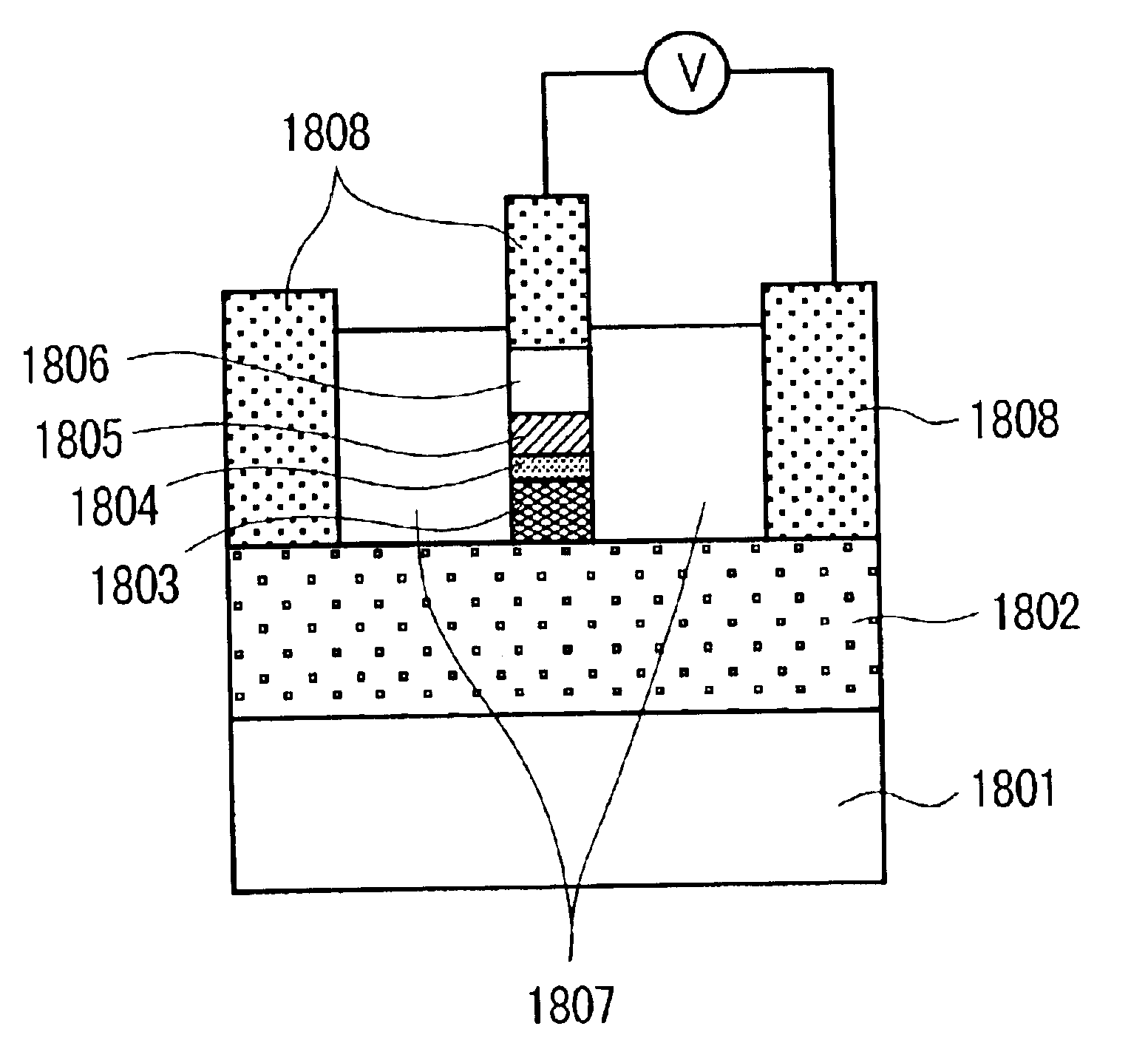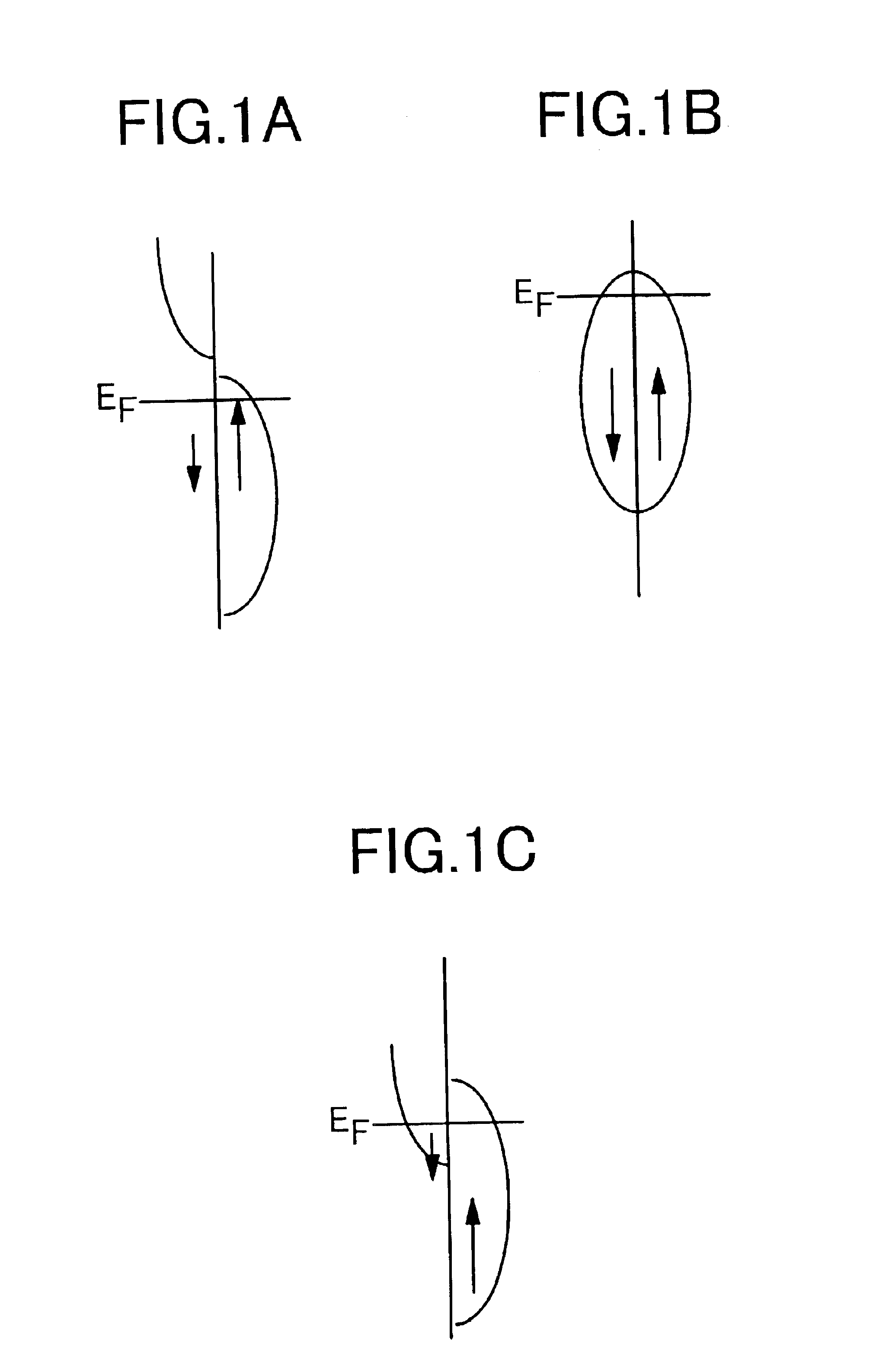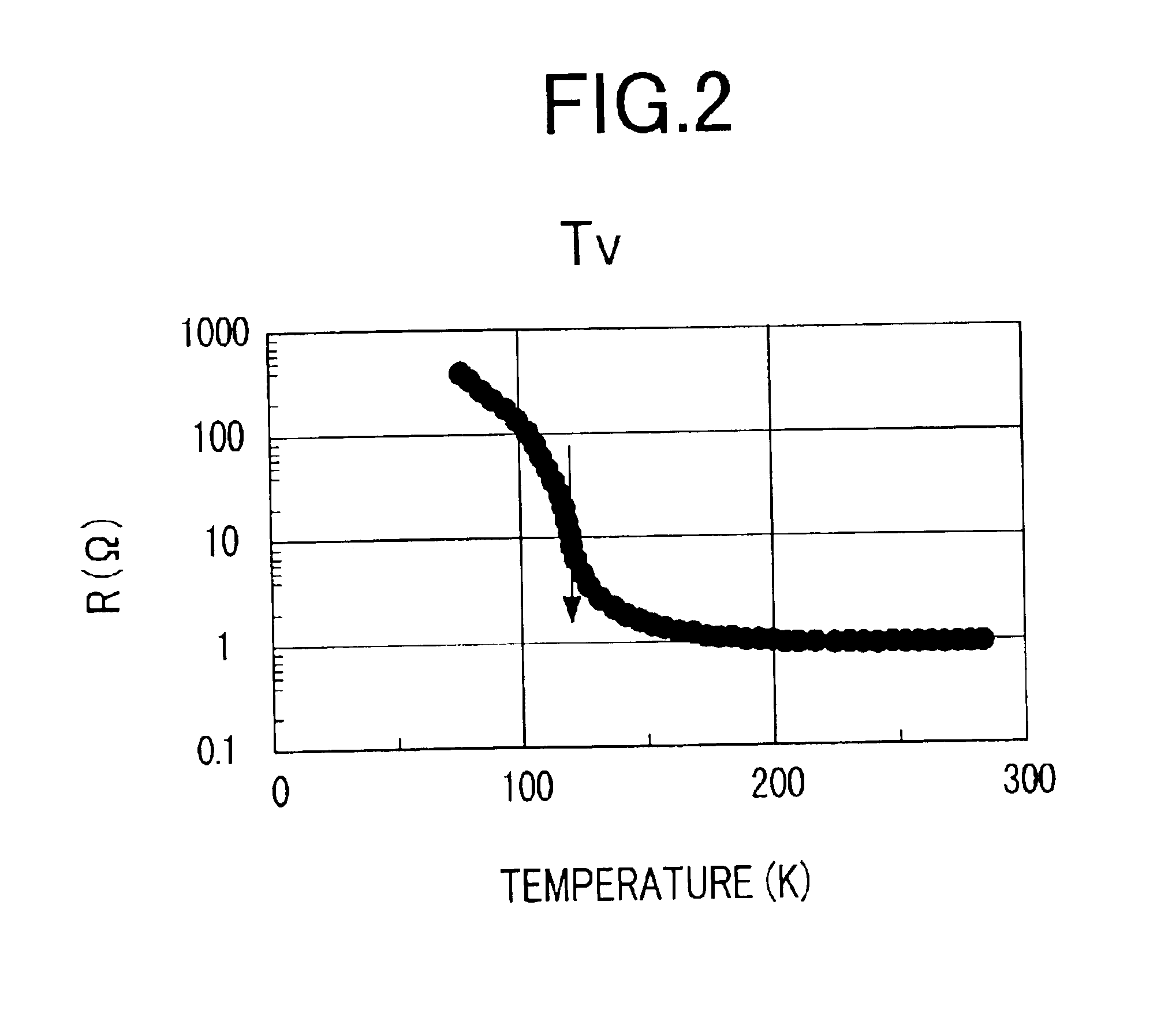Magneto-resistive devices
a magneto-resistive and resistance technology, applied in the field of magneto-resistive devices, can solve the problems of reduced s/n ratio, increased resistance, and accompanied by reduced resistance, and achieve the effect of high resistance change ratio, adequate control of electrical resistance, and increased outpu
- Summary
- Abstract
- Description
- Claims
- Application Information
AI Technical Summary
Benefits of technology
Problems solved by technology
Method used
Image
Examples
example 1
[0082]A magnetic film containing Fe3O4 as a half-metal magnetic material was formed by RF sputtering on a substrate of glass, magnesium oxide, GaAs, AlTiC, SiC, Al2O3, SiO2, or the like.
[0083]The RF sputtering was carried out under the following conditions:[0084]Target: sintered body of Fe3O4 [0085]Atmosphere: argon at about 1-0.1 Pa[0086]Power: 50-150 W[0087]Maximum degree of vacuum achieved: lower than 5×10−3 Pa[0088]Rate of film growth: less than 0.1 Å / s
[0089]It was found that the Fe3O4 film can also be formed very slowly at a growth rate of 0.1-0.01 Å / s by molecular beam epitaxy (MBE), with oxygen being admitted into the atmosphere while Fe is being deposited.
[0090]The Fe3O4 film formed directly on the above-mentioned substrate varies in saturation magnetization depending on the substrate temperate, from less than 0.1 tesla (at room temperature) to 0.2-0.3 tesla (at 400° C.). These values are rather low for the single layer of Fe3O4.
[0091]The Fe3O4 film formed in this manner was...
example 2
[0100]It is important to see if an improvement is made over the conventional GMR in magnetoresistance effect when a half-metal material is bonded to another magnetic material, with a spacer interposed between them. This problem was attacked by calculating the bond at the interface with the help of a model based on electron transport. As shown in FIG. 5, the model consists of Fe3O4 (502), spacer (503), and CoFe (504) in consideration of the fact that electrons greatly transmit from one electron orbital to another. (In this model, s-electrons are assumed for 503 and 504.) The interface state density DL(R) in the left (right) electrode is represented by the formula (2) below, in which C denotes conductance and T denotes transmission rate.
C=T DLDR (2)
[0101]In this model, the electron state is assumed to have the junction of electron density distribution as shown in FIG. 6. This electron density distribution is based on the simplified result obtained from band calculations by the first...
example 4
[0125]Samples of magnetoresistive devices of CPP-GMR structure composed of layers, as shown in FIGS. 20 and 21, were prepared. The layer is made up of the materials shown in FIGS. 8, 9, 10, 11, 12, and 15. Characteristic properties required of the PP-GMR film are:
(a) Sheet resistivity and area product RA no higher than 1 Ω·μm2 (depending on the device area).
(b) Ratio of change in magnetoresistance no lower than 2%.
(c) Coercive force of magnetic material.
[0126]The sheet resistivity and area product (RA) is calculated for the device measuring 120×120 nm in which an oxide magnetic material (such as Fe3O4) is used as the half-metal. A layered structure is assumed which consists of a noble metal layer (2005, 2106), a pinned layer (2006, 2105) containing an oxide half-metal, a spacer (2007, 2104) containing a noble metal, and a free layer (2008, 2103). The sample has a layered structure of Pt (10 nm), Fe3O4 (varied), Au (3 nm), and Fe3O4 (5 nm). The resistivity of Fe3O4, Pt, and Au were 3...
PUM
| Property | Measurement | Unit |
|---|---|---|
| surface area | aaaaa | aaaaa |
| Tc | aaaaa | aaaaa |
| temperatures | aaaaa | aaaaa |
Abstract
Description
Claims
Application Information
 Login to View More
Login to View More - R&D
- Intellectual Property
- Life Sciences
- Materials
- Tech Scout
- Unparalleled Data Quality
- Higher Quality Content
- 60% Fewer Hallucinations
Browse by: Latest US Patents, China's latest patents, Technical Efficacy Thesaurus, Application Domain, Technology Topic, Popular Technical Reports.
© 2025 PatSnap. All rights reserved.Legal|Privacy policy|Modern Slavery Act Transparency Statement|Sitemap|About US| Contact US: help@patsnap.com



